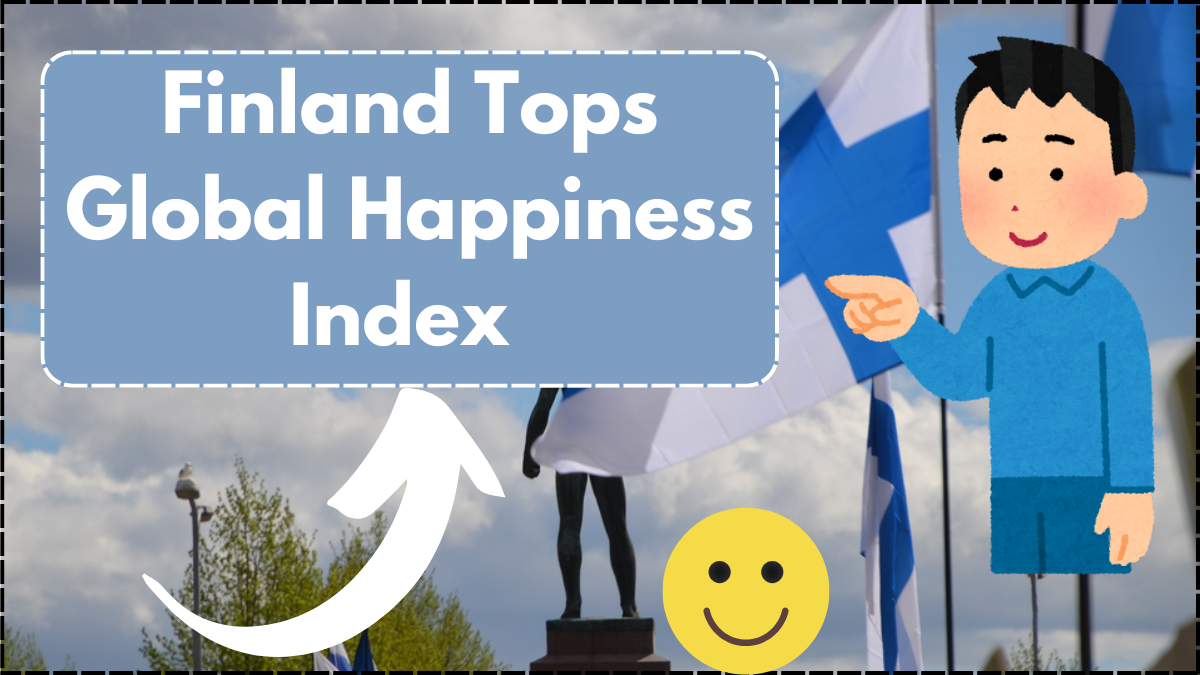Washington, March 20 – Finland has once again been crowned the happiest country in the world, maintaining its top position in the World Happiness Report 2025. This marks the eighth year in a row that Finland has led the rankings, underscoring the nation’s strong societal well-being and high quality of life. The report, published by Oxford University’s Wellbeing Research Centre, is a collaborative effort involving Gallup, the United Nations Sustainable Development Solutions Network, and other global research institutions.

Why Finland Continues to Lead in Happiness
Finland’s consistent top ranking is attributed to several key factors that contribute to overall happiness and life satisfaction. These include:
- A Strong Social Welfare System: Finland offers universal healthcare, free education, and strong social security programs.
- Work-Life Balance: Finnish citizens enjoy shorter working hours, generous parental leave policies, and a culture that prioritizes personal well-being.
- Community and Trust: Finland has one of the lowest corruption levels globally, fostering a high degree of trust in the government and institutions.
- Close Connection to Nature: With vast forests, lakes, and access to green spaces, Finns experience reduced stress and improved mental well-being.
Nordic Countries Dominate the Rankings
The Nordic nations—including Denmark, Iceland, Sweden, and Norway—continue to dominate the list of the world’s happiest countries. Experts suggest that their social cohesion, economic stability, and high levels of public trust contribute significantly to their well-being.
What Defines the Nordic Region? The term “Nordic” originates from the local word “Norden”, meaning “the North.” This region, which includes countries surrounding the Baltic Sea, is recognized for its high quality of life, social equality, and strong public welfare systems.
United States Falls Further in Happiness Rankings
The United States has slipped further in the rankings, dropping from 23rd place in 2024 to 24th place in 2025. According to Ilana Ron Leve, Managing Director at Gallup, a significant factor affecting Americans’ happiness is increased social isolation. More people are eating alone and spending less time engaging in community activities, which negatively impacts their well-being.
Key Factors Considered in the Happiness Report
The World Happiness Report assesses over 130 countries, evaluating various indicators that contribute to national happiness. These include:
| Factor | Impact on Happiness |
|---|---|
| Per Capita GDP | Higher economic stability leads to better living conditions. |
| Social Support | Strong community ties contribute to emotional well-being. |
| Life Expectancy | A longer, healthier life improves overall happiness. |
| Freedom | Personal and political freedoms enhance life satisfaction. |
| Generosity | Philanthropy and community engagement boost morale. |
| Corruption Levels | Lower corruption fosters trust in institutions. |
Emerging Trends: Costa Rica and Mexico Enter the Top 10
A notable shift in the 2025 report is the inclusion of Costa Rica and Mexico in the top 10 happiest countries. This challenges the perception that happiness is solely tied to economic prosperity. These nations have strong community engagement, vibrant cultures, and a focus on well-being despite not being among the world’s wealthiest countries.
Top 10 Happiest Countries in 2025
Based on the latest World Happiness Report, the top 10 happiest countries are:
- Finland
- Denmark
- Iceland
- Sweden
- Netherlands
- Costa Rica
- Norway
- Israel
- Luxembourg
- Mexico
Denmark, ranked second, has remained among the top 10 for over a decade, largely due to its strong social welfare system. Despite high taxes, Danish citizens enjoy free healthcare, subsidized childcare, university education grants, pensions, and caregiving support for the elderly.
Afghanistan Remains the Least Happy Country
At the bottom of the rankings, Afghanistan (147th place) remains the least happy country. The ongoing conflict, economic challenges, and lack of basic services have significantly impacted its citizens’ well-being. The five least happy countries in 2025 are:
- Afghanistan (147)
- Sierra Leone (146)
- Lebanon (145)
- Malawi (144)
- Zimbabwe (143)
FAQs
1. What Makes Finland the Happiest Country in the World?
Finland’s happiness is driven by high levels of trust, strong social welfare programs, excellent work-life balance, and a deep connection to nature. These factors contribute to high life satisfaction among Finnish citizens.
2. Why Did the U.S. Drop in the Happiness Rankings?
The U.S. fell further in the rankings due to increased social isolation, economic stress, and declining community engagement. Factors such as rising living costs and mental health concerns have also played a role.
3. How Does the Happiness Report Measure Well-Being?
The report evaluates well-being based on economic stability, social support, life expectancy, freedom, generosity, and corruption levels. It uses survey data and expert analysis to rank over 130 countries.
4. Can a Country Be Happy Without High GDP?
Yes. Countries like Costa Rica and Mexico demonstrate that strong social connections, cultural vibrancy, and community support can lead to high happiness levels even in nations with lower GDPs.
5. Why Is Afghanistan the Least Happy Country?
Afghanistan ranks last due to political instability, conflict, poverty, and lack of access to basic services. These issues severely affect citizens’ well-being and overall life satisfaction.
The World Happiness Report 2025 continues to highlight the importance of social trust, well-being, and community support in achieving national happiness. While Nordic countries remain dominant, emerging trends show that happiness is not solely dependent on wealth but also on the strength of social and cultural factors.
Click here to learn more.
Pari is a passionate writer known for captivating stories that blend imagination and reality. Inspired by travel, history, and everyday moments, Pari crafts narratives that resonate deeply with readers.